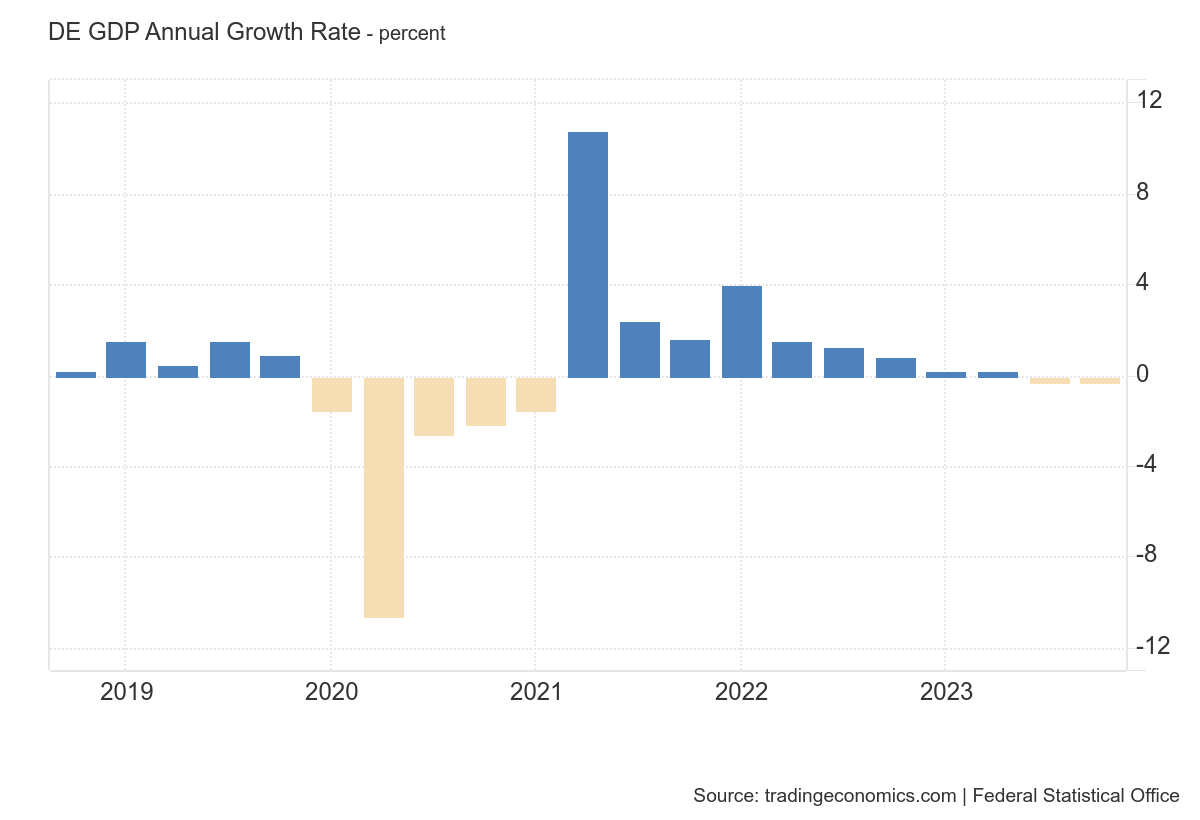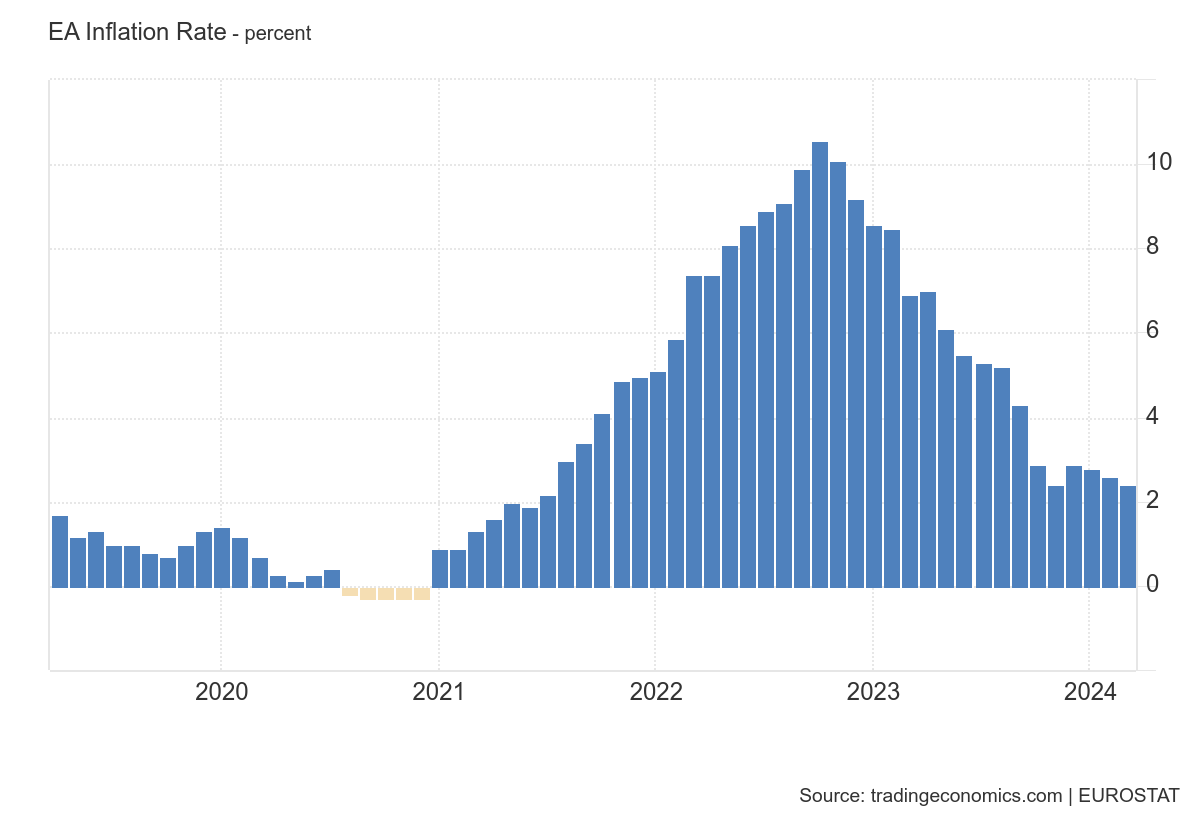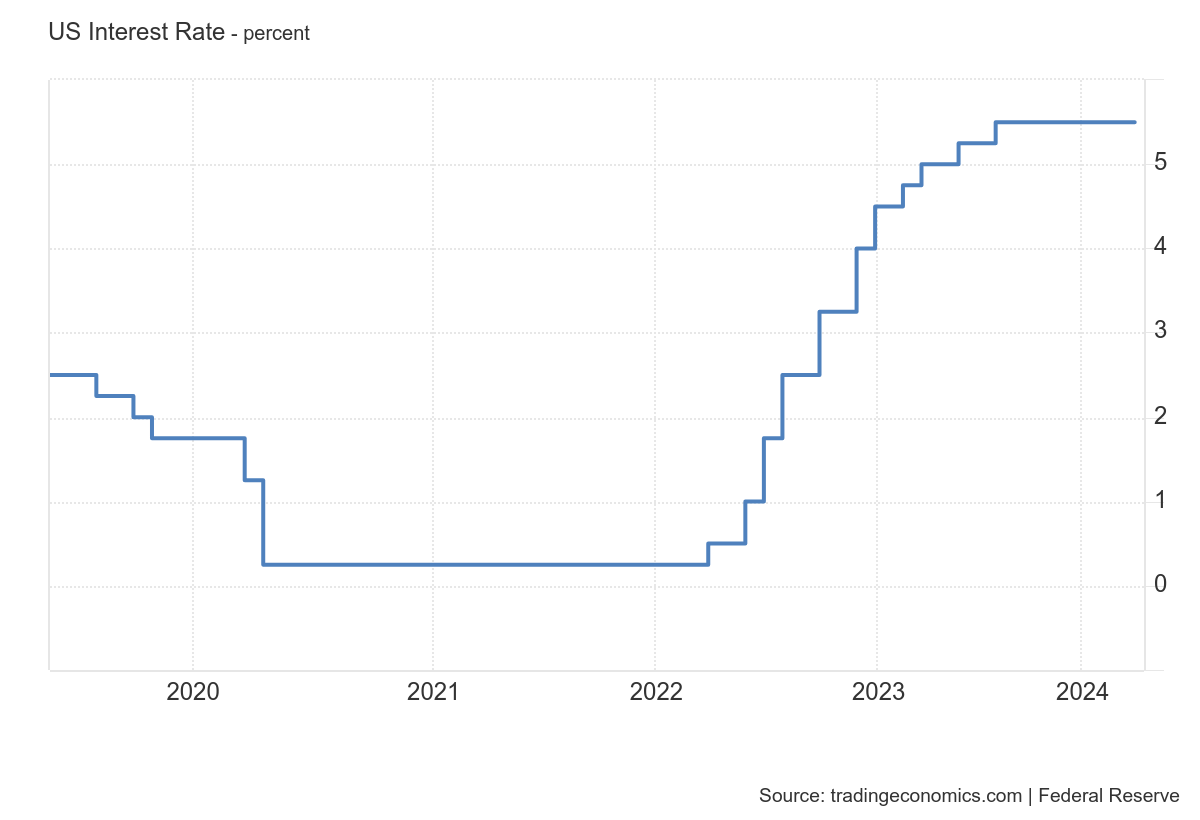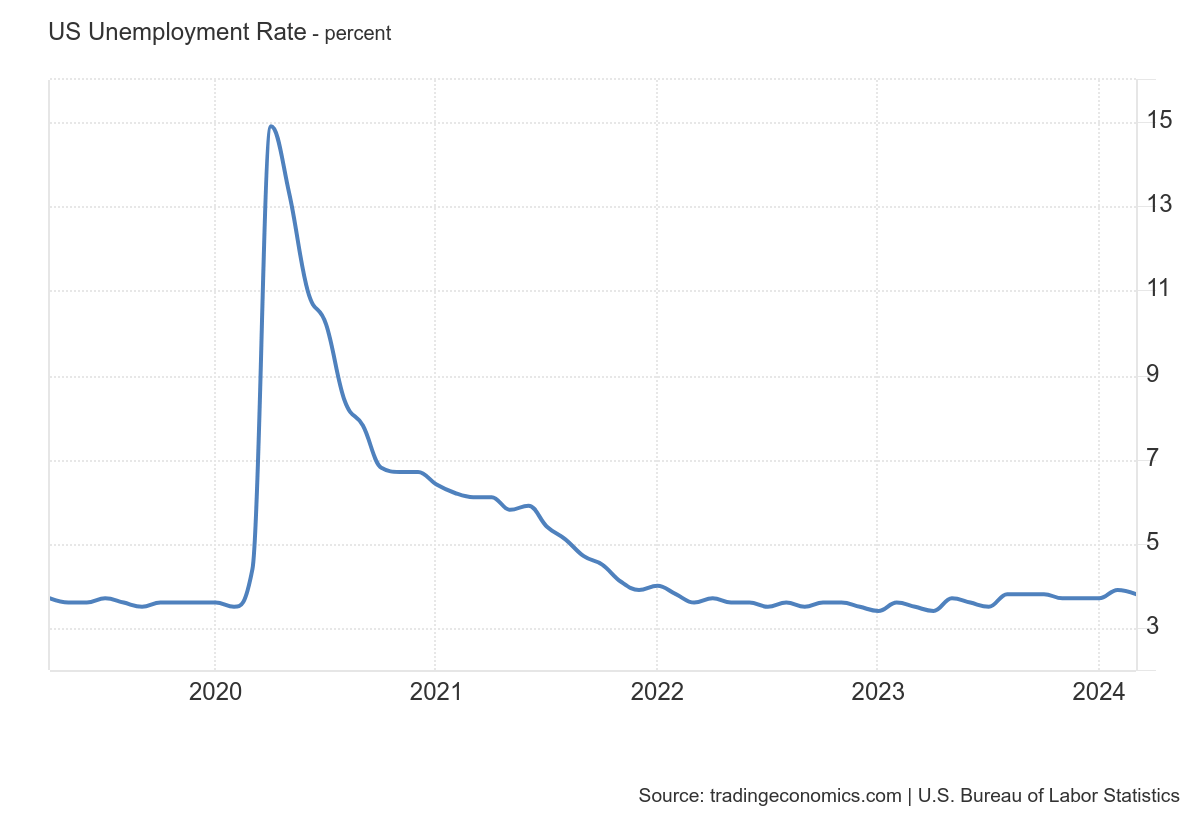The Bank of Japan (BOJ) has kept its short-term interest rates at 0-0.1% and is continuing its policy of buying government bonds despite increasing pressure on the Japanese yen. The USD/JPY exchange rate has reached 34-year highs, coming perilously close to the 160 level. The question of whether there will be currency intervention by the BOJ, which could strengthen the Japanese currency, may be important for investors. The coming week promises to be full of key events for financial markets. We await preliminary GDP and CPI inflation readings from Germany and the euro area. Many investors are looking forward to Wednesday's Federal Open Market Committee (FOMC) interest rate decision and the press conference by Federal Reserve Chairman Jerome Powell. The week will conclude with US unemployment rate data.
Table of contents:
- Germany's gross domestic product (GDP) in quarterly terms (Q1).
- Eurozone consumer price index (CPI) annualised (April)
- US interest rate decision
- US unemployment rate
- Stocks to watch
Tuesday, 30.04, 10:00 CET, Germany's gross domestic product (GDP) in quarterly terms (Q1).
In the fourth quarter of 2023, Germany's real Gross Domestic Product (GDP) decreased by 0.2% on an annual basis. This was the second consecutive decline in GDP, marking the entry of Europe's largest economy into a technical recession. This is attributed to the compound effects of rising prices, increased borrowing costs and weakened external demand.
The current analyst forecast is for a gentle rebound in Q1 GDP to an annual rate of 0.1%.

Source: Tradingeconomics.com
A higher-than-expected reading could have a bullish impact on the EUR, while a lower-than-expected reading could be bearish for the EUR.
Impact: EUR/USD, DE40
Tuesday, 30.04, 11:00 CET, Eurozone consumer price index (CPI) annualised (April)
The rate of consumer price inflation in the euro area has been confirmed at 2.4% year-on-year in March 2024, equivalent to November's 28-month low and slightly above the European Central Bank's target of 2%.
Analysts' forecast is for current CPI inflation to remain at 2.4%.

Source: Tradingeconomics.com
A higher-than-expected reading could have a bullish impact on the EUR, while a lower-than-expected reading could be bearish for the EUR.
Impact: EUR/USD
Wednesday, 1.05, 20:00 CET, US interest rate decision
The market is pricing in a 97% probability of leaving the current interest rate level at 23-year highs. The next cut is expected in September this year. Nevertheless, the Fed is still maintaining its assumption of 3 cuts later this year.
The current analyst forecast is for interest rates to remain at 5.25-5.5%.

Source: Tradingeconomics.com
A higher-than-expected interest rate could be bullish for the USD, while a lower-than-expected interest rate could act bearishly on the USD.
Impact: US500, EUR/USD
Friday, 3.05, 14:30 CET, US unemployment rate
Despite the Federal Reserve's recent policy tightening, the unemployment rate has remained in a narrow range of 3.7-3.9% since August 2023, indicating a strong labour market.
The current analyst forecast is for the unemployment rate to remain at 3.8%.

Impact: Tradingeconomics.com
A higher-than-expected reading could have a bearish impact on the USD, while a lower-than-expected reading could be bullish for the USD.
Impact: US500, EUR/USD
Stocks to watch
- Amazon (AMZN)
Amazon plans to release its first quarter financial results just after the market close on Tuesday. Revenue and profits are expected to increase significantly compared to the previous year. Amazon recently launched a new grocery delivery subscription service and expanded its artificial intelligence (AI) tools, which is expected to potentially make the company more competitive in the market. Of particular interest to analysts is its growing advertising division, especially following the introduction of ads on its Prime Video service.
The e-commerce giant's shares are currently undergoing a market correction. Amazon's average share price set by analysts on MarketScreener is $210, 21% above its current price level.
- McDonald’s (MCD)
Restaurant chain and franchisor McDonald's will announce its first quarter results on Tuesday. Investors appear to be concerned about the potential negative impact of inflation, geopolitical uncertainty and competitive challenges on the company.
McDonald's shares are currently undergoing a significant correction. Despite the difficult market conditions, the average share price forecast by analysts is $321, 17% above the current price level.
- Apple (AAPL)
Apple (AAPL) is preparing to release its first quarter financial results. The data will be announced on Thursday, 2 May. Analysts at Morningstar are predicting a weaker quarter for iPhone sales, which significantly impacts the performance of the company as a whole, as the iPhone is their core product. Despite this, the company continues to achieve strong profitability, mainly due to the growing share of the services segment and the popularity of more expensive models such as the iPhone Pro. The lack of major artificial intelligence announcements has not affected the value of the company's shares, although news in this area is expected in the summer.
Apple's shares are in a multi-month correction, but the average analyst forecast points to a price of US$199 per share, up 17% above the current price level.
Grzegorz Dróżdż, CAI MPW, Market Analyst of Conotoxia Ltd. (Conotoxia investment service)
Materials, analysis and opinions contained, referenced or provided herein are intended solely for informational and educational purposes. Personal opinion of the author does not represent and should not be constructed as a statement or an investment advice made by Conotoxia Ltd. All indiscriminate reliance on illustrative or informational materials may lead to losses. Past performance is not a reliable indicator of future results.
CFDs are complex instruments and come with a high risk of losing money rapidly due to leverage. 71,48% of retail investor accounts lose money when trading CFDs with this provider. You should consider whether you understand how CFDs work and whether you can afford to take the high risk of losing your money.




